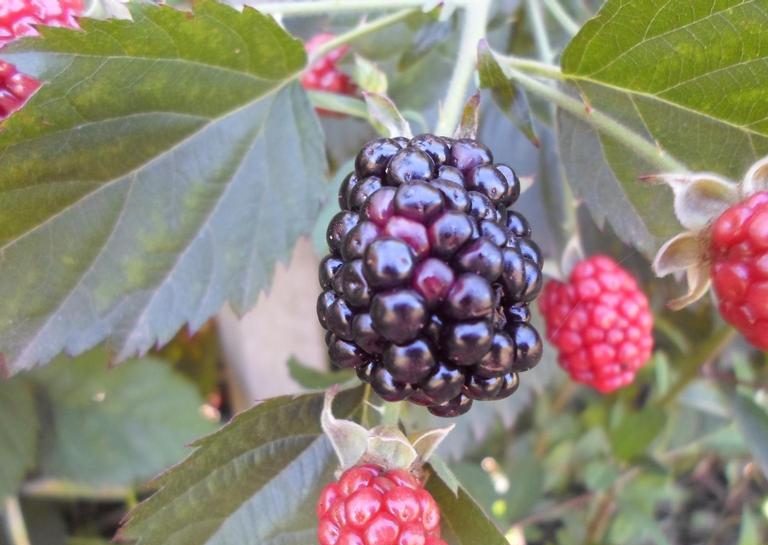Fruits & Nuts

Blackberry plants can produce delicious berries if they are well maintained and pruned correctly. These plants can grow vigorously, however, there are a few steps in managing blackberries that growers can take to control the growth and produce more berries.
Pruning
It is common for blackberry plants to produce more primocanes (first year canes) than are needed. More primocanes do not always equal more berries. The more growth there is, the less air circulation and often times more disease issues.
It is recommended to fill a trellis with evenly-spaced primocanes. For un-trellised blackberry plants, maintain the base of the hedgerow no wider than 18 inches, with no more than six canes per foot of row.
Another pruning mistake is not removing the spent floricanes (second year canes) as soon as the berries are picked. Once the berries are gone, it is best to remove the floricanes to make room for the growing primocanes. This decreases the chance of spreading disease.
Prevention
Scouting plants for disease and insects on a regular basis should not be overlooked. Scouting is the best way to know what pest problems are in the field. Below are some tips to help manage problems with disease and insects.
- plant in a well-drained soil in full sun
- use proper plant spacing
- prune correctly
- mulch around the plants
- control weeds
It may also be a good idea to remove all the wild blackberries in the area. Sometimes that is not possible, but disease can easily spread from a wild blackberry to the home or commercial planting.
Common Diseases
There are several diseases that affect blackberries including anthracnose, rosette (double blossom) and several types of rusts and viruses. The variety of plant can affect what disease issues it will have.
For example, orange rust and rosette are common diseases found on both thorny and thornless varieties. However, it is more common to see orange rust on thornless plants and rosette on thorny plants.
It is common to find more than one virus in a blackberry planting. There are no virus-resistant plants available, but the more aggressive growing plants are more tolerant to these viruses.
Agents in your county Extension office can recommend a preventative spray program to help with certain diseases, and can also recommend insecticides if needed. Visit www.aces.edu to find your county Extension office.
Rosette (double blossom)
This disease spreads from one plant to another when an infected plant blooms. The infected blossoms will not produce fruit. The non-infected canes of the infected plant are also affect and will produce poor quality fruit. The disease spores are released from the bloom to newly growing primocanes, and the disease cycle starts over again.
There are two ways to stop this disease. Growers can spray a fungicide while the plants are blooming or they can break the cycle. Breaking the cycle involves removing the primocanes until the floricanes stop blooming. After the floricanes stop blooming, there will be plenty of time for the new primocanes to grow, fill the trellis, and develop flower buds for the next season.
Rosette is common on wild blackberry plants growing on fence rows and many other places. The timely applications of fungicides can greatly reduce rosette disease as well.

